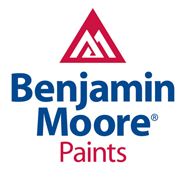Transform Your Metal Surfaces with Advanced Coating Technology
For property managers, commercial developers, and homeowners in New Jersey, maintaining the integrity and appearance of metal fixtures is a top priority. From industrial machinery to intricate residential railings, metal surfaces require a durable, smooth, and long-lasting finish. Traditional painting methods like brushes and rollers can often result in drips, uneven coverage, and significant paint waste. This is where electrostatic painting emerges as a superior solution, offering a factory-like finish with unparalleled efficiency and durability. It’s a cutting-edge technique that leverages the power of static electricity to create a flawless, uniform coat that protects and beautifies any conductive surface.
How Does Electrostatic Painting Work?
The science behind electrostatic painting is both simple and ingenious, revolving around the basic principle that opposites attract. The process uses a specialized spray gun that applies a positive electrical charge to the paint particles as they are atomized. Simultaneously, the target metal object—be it a fence, locker, or piece of machinery—is grounded, giving it a negative charge.
When the positively charged paint is sprayed, it is magnetically drawn to the negatively charged surface. This strong attraction ensures that the paint adheres directly to the metal, creating an incredibly even and comprehensive coating. This magnetic pull is so effective that it causes the paint to wrap around the object, covering even hard-to-reach areas like the backside of railings or intricate crevices, an effect known as the “wrap-around” phenomenon. The result is a smooth, durable finish with minimal overspray, making it a highly efficient and clean application method.
Key Benefits of Choosing Electrostatic Painting Services
Unmatched Transfer Efficiency
One of the most significant advantages is its high transfer efficiency. Up to 90% of the paint adheres to the target surface, drastically reducing paint waste compared to conventional spray methods. This not only makes the process more cost-effective but also more environmentally friendly by minimizing airborne paint particles.
Superior Durability and Adhesion
The electrostatic bond created between the paint and the surface is incredibly strong. This results in a hard, enamel-like finish that is highly resistant to chipping, peeling, and corrosion. For both commercial painting and residential painting projects, this means a longer-lasting finish that can withstand heavy use and harsh weather conditions.
Quick Application and Curing
Electrostatic painting is a fast process. Because the coating is so uniform, fewer coats are needed, and the specialized paints often dry quickly, sometimes within minutes. This minimizes downtime for businesses and allows residents to return to their normal routines faster. For industrial settings, equipment can often be returned to service almost immediately.
Did You Know?
The magnetic-like attraction in electrostatic painting is approximately 75 times stronger than the pull of gravity! This is what enables the paint to defy gravity and wrap around surfaces for complete, 360-degree coverage without drips or runs.
Electrostatic vs. Traditional Painting: A Comparison
| Feature | Electrostatic Painting | Traditional Painting (Brush/Roller/Spray) |
|---|---|---|
| Finish Quality | Smooth, factory-like, uniform finish. | Prone to brush marks, drips, and unevenness. |
| Material Waste | Minimal overspray, highly efficient use of paint. | Significant waste from overspray and drips. |
| Durability | Excellent adhesion, highly resistant to chipping. | Varies, generally less durable and more prone to peeling. |
| Application Speed | Faster application with fewer coats needed. | Slower, often requires multiple coats and longer drying times. |
Your Local Tinton Falls, NJ Electrostatic Painting Experts
For businesses and residents in Tinton Falls and across New Jersey, Spectra Painting provides expert electrostatic painting services tailored to local needs. Since 1989, we have served our community by delivering high-quality, professional results. Whether it’s restoring metalwork on a historic property or refinishing industrial equipment, our team has the experience and specialized equipment to handle projects of any scale. We understand the unique environmental demands of the Garden State and use coatings that provide lasting protection. Our services, including meticulous sandblasting for surface preparation, ensure that every electrostatic application is built on a solid foundation for maximum longevity.
Ready for a Flawless, Durable Finish?
Elevate the look and longevity of your metal surfaces. Contact Spectra Painting today for a professional consultation and discover the benefits of our electrostatic painting services.
Frequently Asked Questions
What types of surfaces can be painted with electrostatic technology?
Electrostatic painting is primarily designed for conductive materials. This makes it ideal for metals like steel, iron, and aluminum. It can be used on items such as metal fencing, machinery, lockers, window frames, doors, and industrial equipment.
Is the electrostatic painting process safe?
Yes, when performed by trained professionals. Reputable contractors like Spectra Painting follow strict safety protocols. The process uses low-pressure fluid and specialized grounding to ensure a safe and controlled application with minimal overspray.
Can electrostatic painting be done on-site?
Absolutely. One of the major benefits of this technology is its portability. Our teams can bring the equipment directly to your commercial, industrial, or residential location, allowing for efficient refinishing of fixed assets like railings, fences, and large machinery without needing to remove them.
How does this process contribute to historic restoration?
For historic restoration projects, preserving original metalwork is crucial. Electrostatic painting provides a smooth, thin, yet incredibly durable coating that protects delicate and intricate ironwork from the elements without obscuring fine details, making it an excellent choice for preserving historical integrity.






